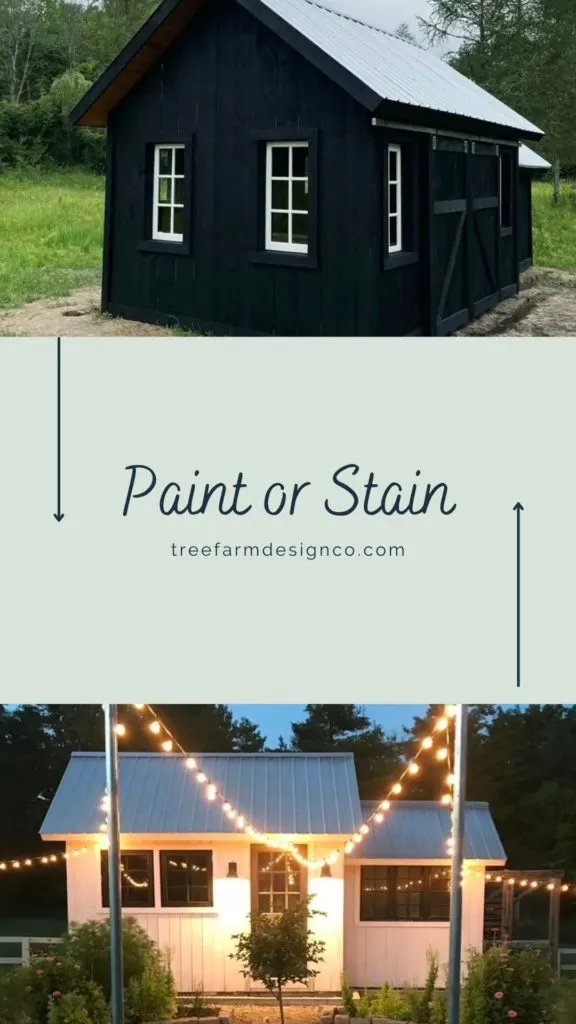Once you’ve successfully built an outbuilding or maybe somewhere in the planning process most people find themselves asking is it better to paint or stain a shed? I’ve done both and I want to walk through some of the differences and pros and cons of the two.
What is the difference between stain and paint?
The most basic fundamental difference is that paint sits on top of the wood and stain soaks into the wood. You can paint a lot more surfaces than you can stain. That’s especially true with a good coat of primer on it first.
Paint often comes in a wider variety of colors and is also available in different sheens. The sheen of the paint is how glossy or reflective the finish is. The stain we used came in a wide variety of flat, matte and ultra-flat. So, no gloss at all or real option for sheen per say.
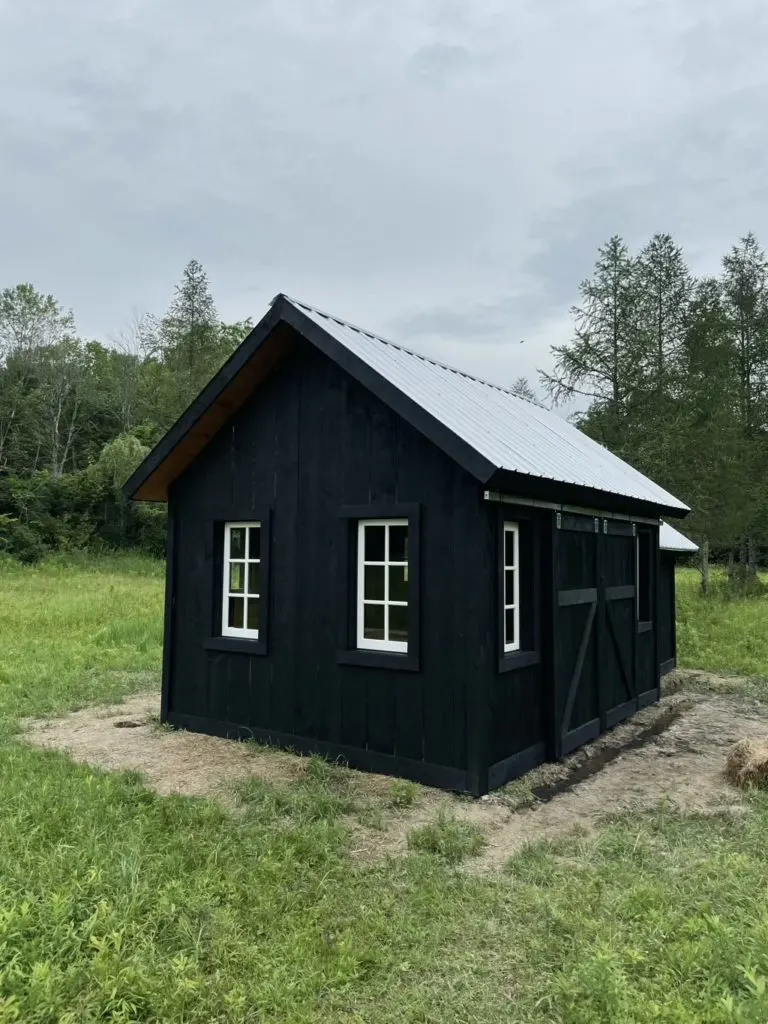
The TLDR is that after staining the sheep shed black, I won’t paint another outbuilding if I can help it. I’m “Team Stain” all the way. But I will be very upfront there is not a huge difference. If you are leaning towards paint and don’t mind a few extra steps, it will be fine.
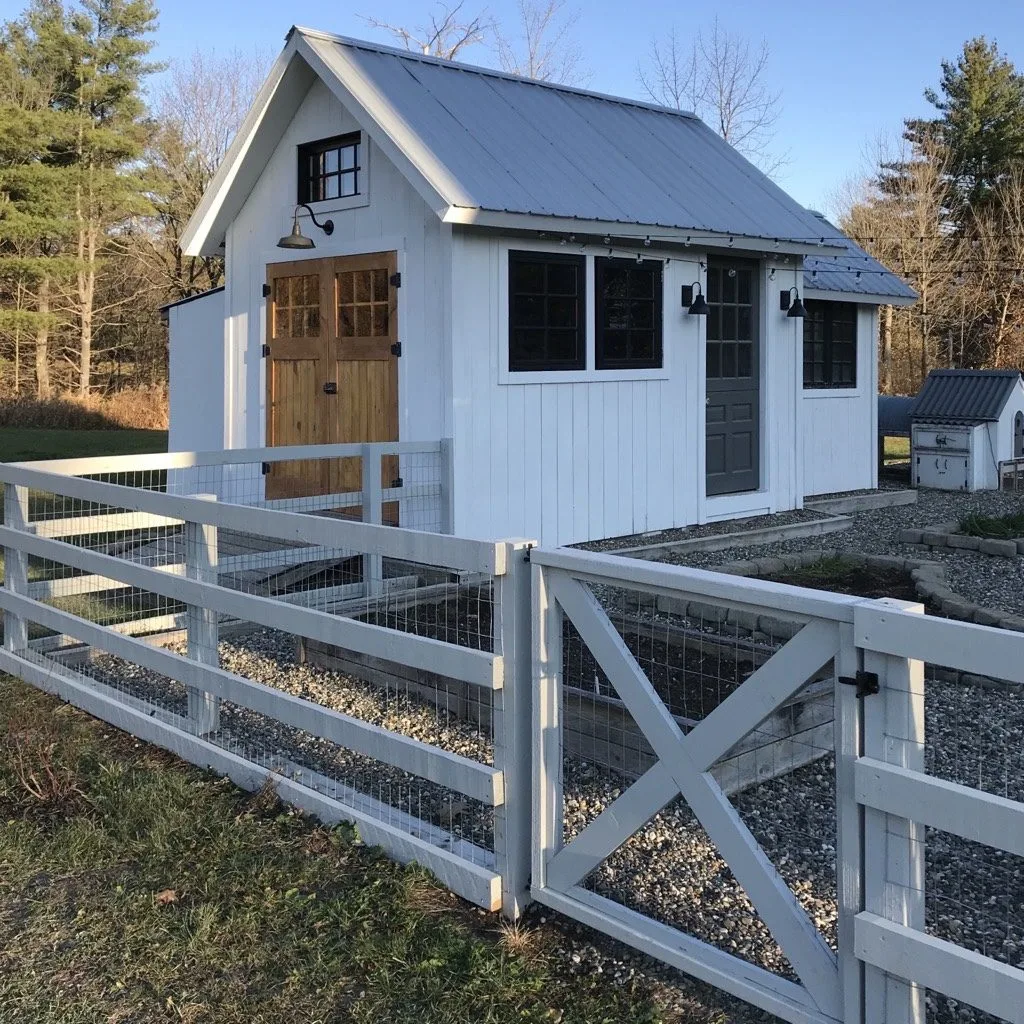
The chicken coop and garden shed were painted with off the shelf white barn paint. It’s cheaper than normal paint but meant for outdoor projects, it costs less than $20/gallon and does a decent job of holding up. What it doesn’t do is prime the wood, cover any knots or handle moisture on horizontal surfaces well.
Why am I wearing a “Team Stain” metaphorical tee-shirt and writing TFDc + Stain 4EVA on my notebooks?
I have no good excuse for the notebook thing, but I am smitten with using stain. First, it doesn’t require priming, that alone makes it worth giving a good hard look. And while many people will say that paint lasts longer, I’m going to go ahead and disagree about that on non-deck surfaces. Stain soaks into the wood which makes it much less likely to chip, flake or break away from the surface. It will wear away faster but on surfaces like walls, fences and doors, wear is of much less concern.
Also TFDc is Tree Farm Design Co. in cast that wasn’t clear, I just really want to make sure that joke lands because I find it really funny.
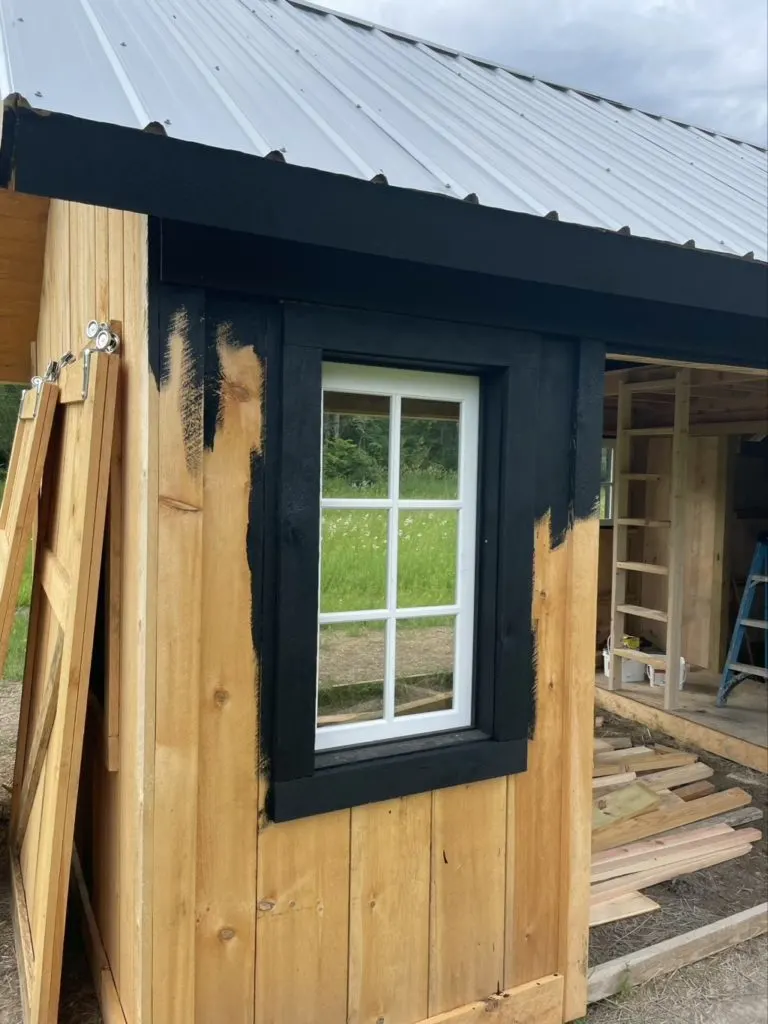
What about color selection?
When most people think of stain they tend to think of natural wood tones. It’s true that you can get beautiful wood toned stains, or clear stains to exentuate the look of your wood. But an opaque stain can come in basically any color that paint can come in.
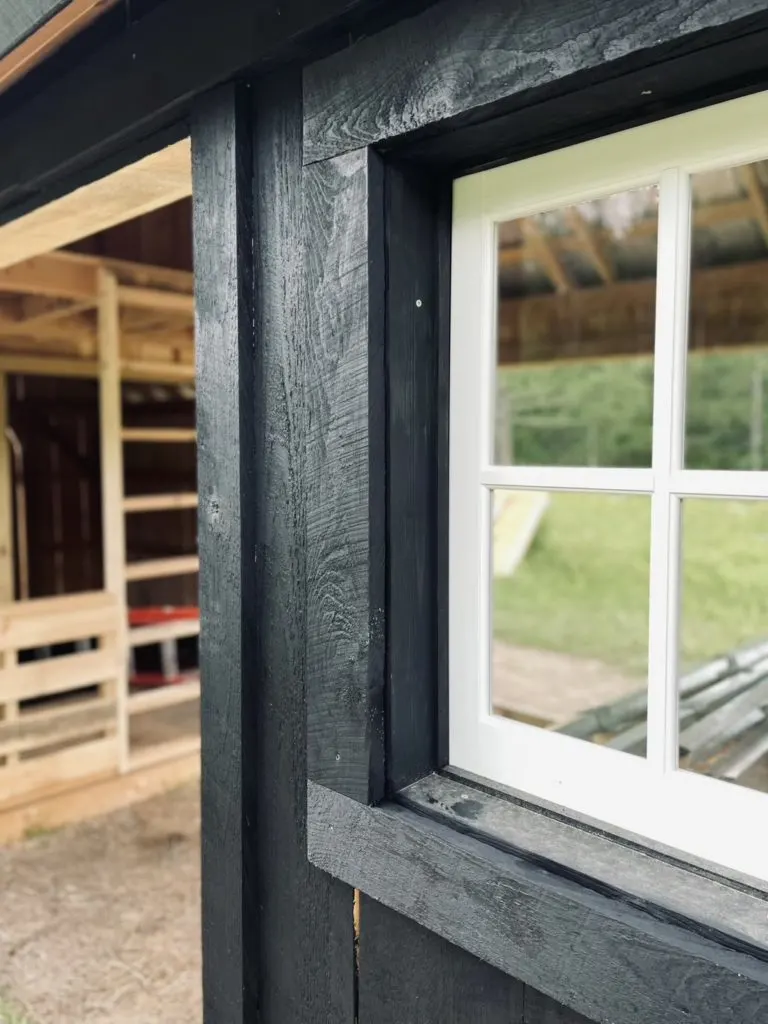
We used Benjamin Moore Arborcoat solid stain in Midnight Dream on the shed. Arborcoat is available in nearly all of the Benjamin Moore paint colors (I don’t think Aura colors are available). We had used Soot in a few places inside and wanted that but extra, so we went one shade darker for the shed.
How do you apply stain?
The manufacturer suggests washing the wood ahead of time and letting it dry. Our shed is out in the middle of the pasture, surrounded by clay and we barely had a week without rain this summer. The shed was wet and dirty when we stained it and it came out just fine. We didn’t have to worry about the water spots, mud or really anything else the stain covered everything very, very well.
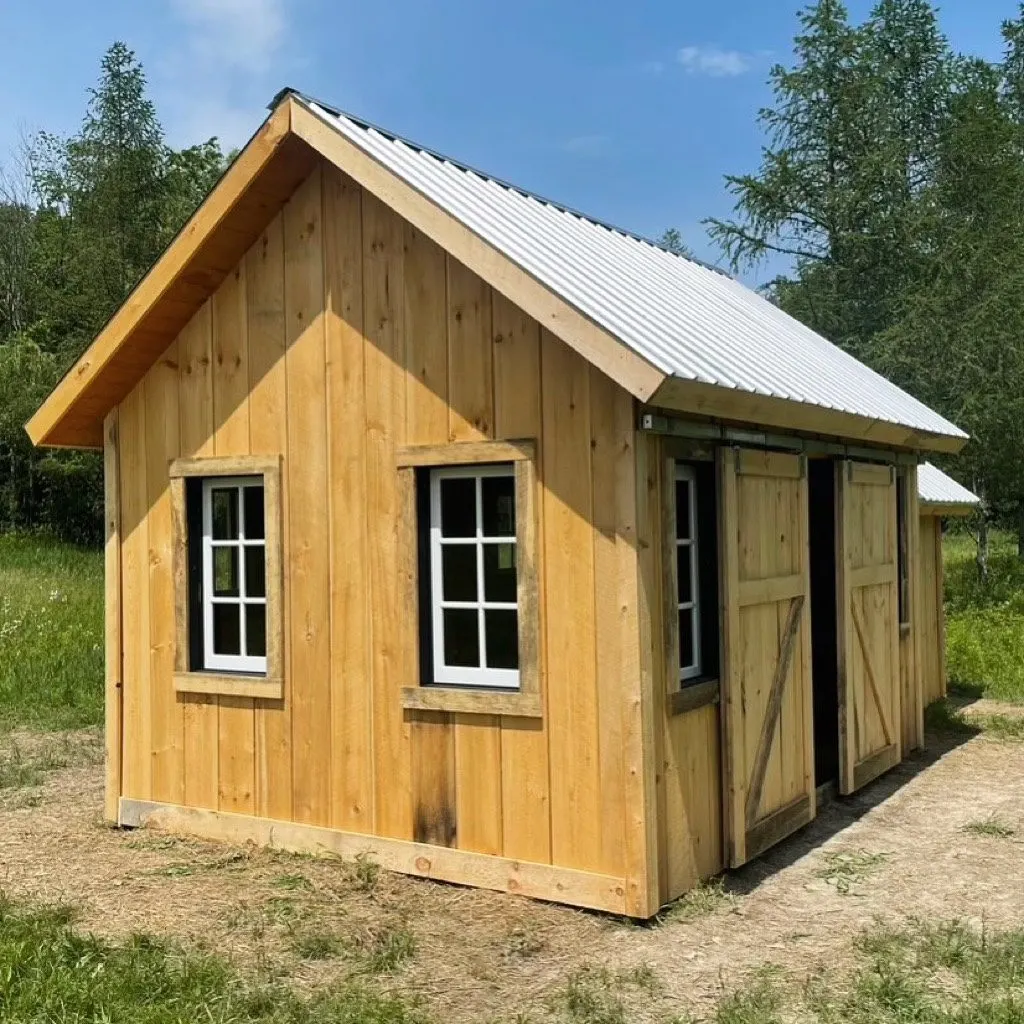
We used a combination of rolling and brushing the stain on to get the best coverage and speed. The boards weren’t prestained obviously and we are not doing battens so getting the stain between the boards was the biggest challenge. You can see a peak of one of the gaps we had to manually touch up after in the picture above. Using a big nap roller for rough lumber helps, but you will likely still need a brush for smaller areas and between boards. The cleanup for Arborcoat is super easy with just water.
How many coats do I need?
I had a horrible inclination to put in a dad joke about jackets here and I’m horrified at what I’ve become. I’m going to resist, but be honest about it.
Moving on.
For the stain we only had to apply one coat. We did some touch up in areas where you could still see raw wood but one coat gave us the coverage and color we wanted and it went on super fast.
What if I want to paint?
Painting a shed is not really any harder. The biggest suggestion I have is to not skimp on the primer. Or even worse, do what I did and skip it altogether.
That was dumb.
The first time I painted the garden shed, I just slapped two coats of barn paint on it and was nearly instantly disappointed. As soon as it dried I could see the knots shining through in a mocking muddy brown.
I tried spot priming which then looked like my shed had pimple cream covering an outbreak. The primed spots were whiter than the rest of the white.
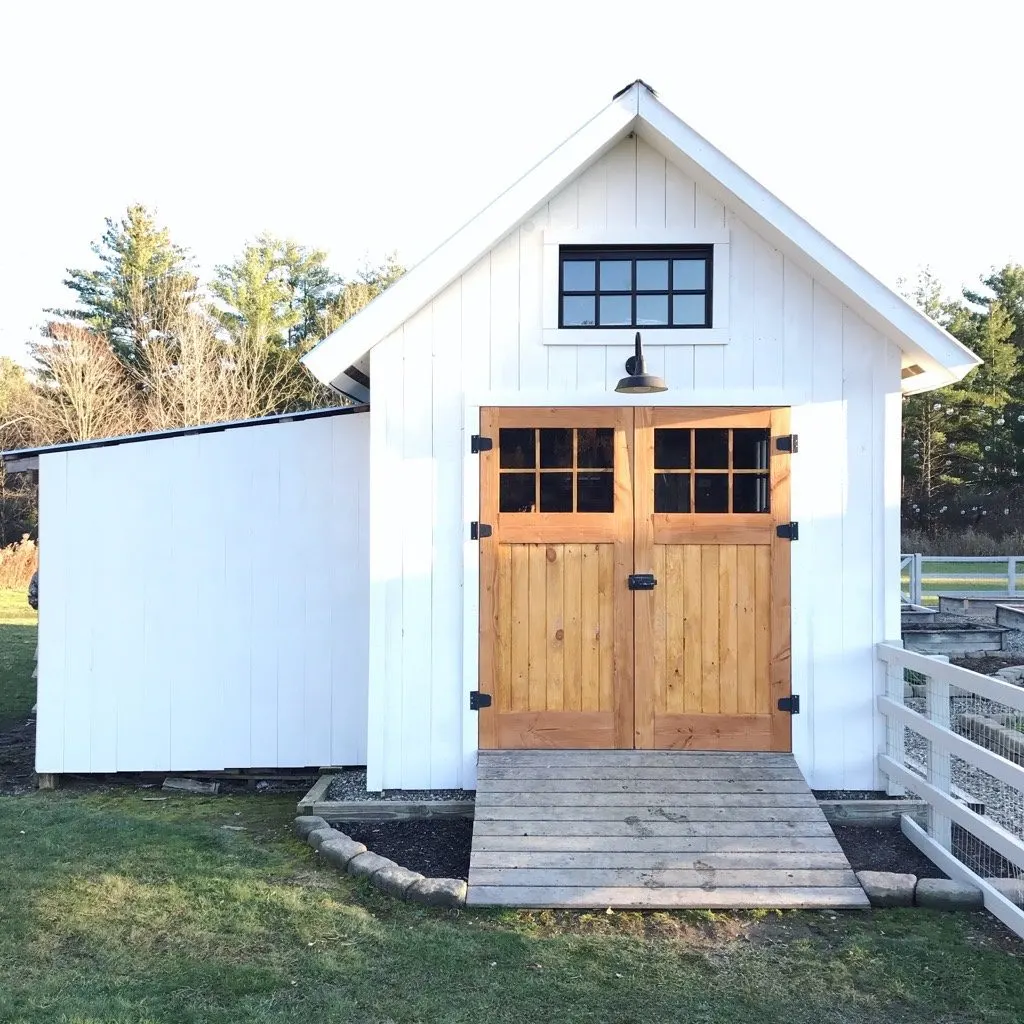
The steps to painting a shed or outbuilding properly are:
- Clean the wood from dirt and debris
- Seal all knots with an oil based or shellac based primer
- Prime the entire surface with a water based or regular primer
- Apply two coats of higher quality exterior paint (skip the cheap barn paint)
If you are still unsure of why I’m team stain? Go back and re-read that list, it is far far more intesive than just stain the thing.
So, is it better to paint or stain a shed?
If you have a fence or shed? Just stain the thing.
